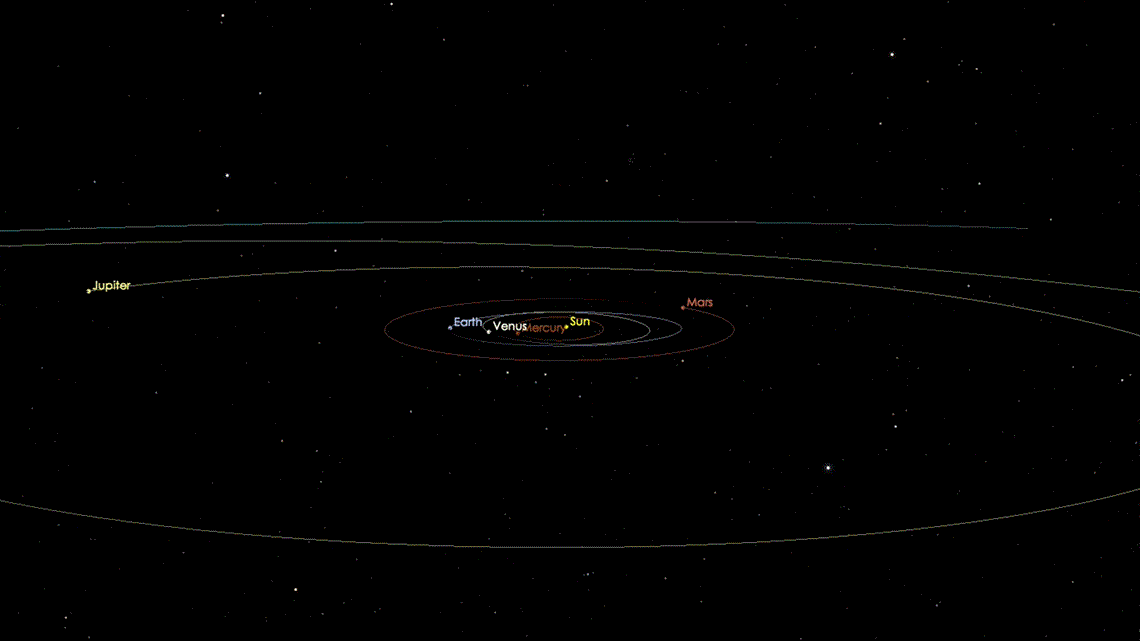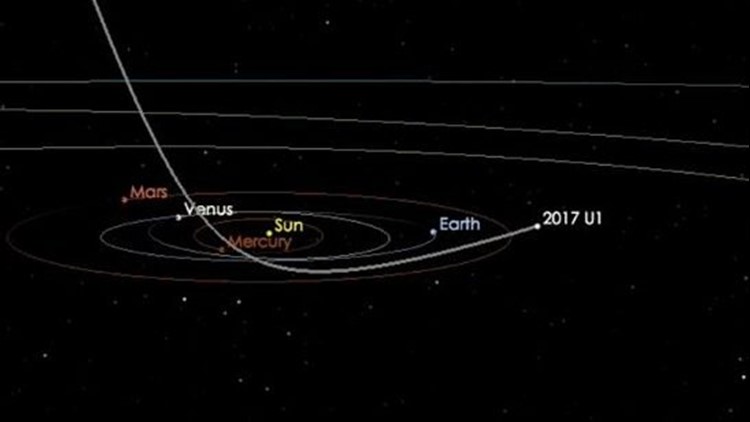Is a comet? An asteroid? NASA’s not sure. The space agency doesn’t even know where it came from, but it’s not behaving like the local space rocks and that means it may not be from our solar system.
If that’s confirmed, NASA says “it would be the first interstellar object to be observed and confirmed by astronomers.”
“We have been waiting for this day for decades,” Paul Chodas, manager of NASA’s Center for Near-Earth Object Studies, said in a NASA news release. “It’s long been theorized that such objects exist — asteroids or comets moving around between the stars and occasionally passing through our solar system — but this is the first such detection. So far, everything indicates this is likely an interstellar object, but more data would help to confirm it.”
NASA says astronomers are pointing telescopes on the ground and in space at the object to get that data.
For now, the object is being called A/2017 U1. Experts think it’s less than a quarter-mile (400 meters) in diameter and it’s racing through space at 15.8 miles (25.5 kilometers) per second.


It was discovered October 19 by the University of Hawaii’s Pan-STARRS 1 telescope on Haleakala, Hawaii.
Rob Weryk, a postdoctoral researcher at the University of Hawaii Institute for Astronomy, was the first to identify the object and immediately realized there was something different about it.
“Its motion could not be explained using either a normal solar system asteroid or comet orbit,” he said. “This object came from outside our solar system.”
Whatever “it” is, the object isn’t a threat to Earth.
NASA say that on October 14, it safely passed our home world at a distance of about 15 million miles (24 million kilometers) — that’s about 60 times the distance to the moon.
Where’s it going? Scientists think the object is heading toward the constellation Pegasus and is on its way out of our solar system.
“This is the most extreme orbit I have ever seen,” said Davide Farnocchia, a scientist at the Center for Near-Earth Object Studies. “It is going extremely fast and on such a trajectory that we can say with confidence that this object is on its way out of the solar system and not coming back.”
“It” may eventually get a better name than A/2017 U1, but since the object is the first of its kind, the International Astronomical Union will have to come up with new rules for naming the object.



